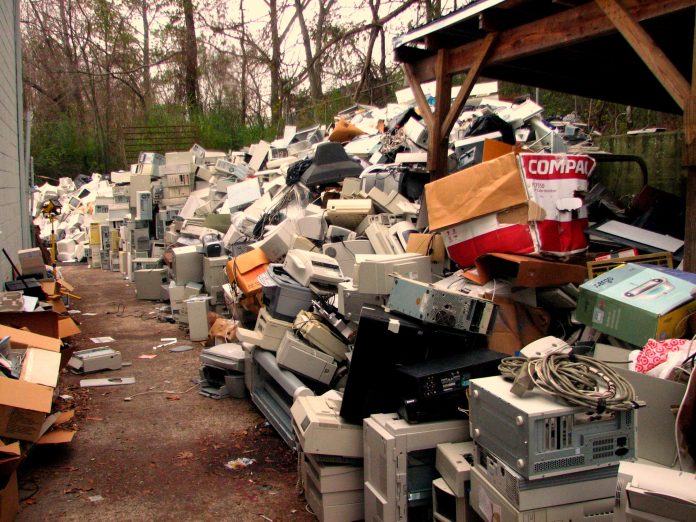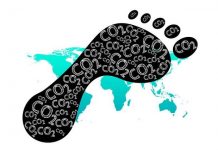E-Waste management in India
E-waste is technically all waste electrical and equipment (WEEE) discarded without the intent of reuse.
E-waste Crisis:
E-waste is growing at a compound yearly development rate (CAGR) of about 30% in the nation.
Assocham estimated that e-waste generation was 1.8 million metric tons (MT) once a year in 2016 and would reach 5.2 million metric tons once a year by 2020.
Experts predict that it gets buried under the ground in landfills for a considerable length of time as it isn’t biodegradable.
E-waste can pollute water sources and food-gracefully chains.
A major larger part of the e-waste is recycled by the informal sector, where very crude methods are used.
Women and children are particularly affected as they consume the plastic from electronic merchandise, in the process of getting to metals and other toxins that are additionally carcinogenic and enter their circulatory system.
Management of E-waste in Indian Context :
The main sources of electronic waste in India are the government, open and private (industrial) sectors, which represent very nearly 70 percent of all-out waste generation. The commitment of individual households is relatively little at around 15 percent; the rest being contributed by manufacturers. In spite of the fact that individual households are not large supporters of waste generated by computers, they consume large quantities of consumer durables and are, therefore, potential creators of waste.
E-Waste Management Rules, 2016
The salient rules are:
Manufacturer, dealer, refurbished and Producer Responsibility Organization (PRO) have been introduced as extra stakeholders in the rules.
The materialness of the rules has been extended to components, consumables, spares and parts of EEE notwithstanding equipment.
E-waste rules will currently include Compact Fluorescent Lamp (CFL) and other mercury containing lights, just as other such equipment.
The new Rules will bring the producers under Extended Producer Responsibility (EPR), alongside targets. Producers are made liable for collection of E-waste and for its exchange i.e. the mass consumers should collect the items and hand them over to authorized recycle’s.
Various producers can have a separate Producer Responsibility Organization (PRO) and ensure collection of E-waste, just as its removal in an environmentally stable manner.
Under the new rules the role of State Governments is to ensure safety, health and ability development of the workers involved in dismantling and recycling operations.
Arrangement of penalty for infringement of rules has been introduced.
The process of dismantling and recycling has been simplified through one system of authorisation which the Central Pollution control panel will give the only authorisation during the state .
Poisonous constituents present in E-waste and their removal mechanism affect human health and lead to various diseases hence the transportation of E-waste has been made more stringent.
Deposit Refund Scheme has been introduced as an extra economic instrument wherein the producer charges an extra sum as a deposit at the time of sale of the electrical and electronic equipment and returns it to the consumer alongside interest when the end-of life electrical and electronic equipment is returned.
Significant Stakeholders/Responsibilities as mentioned in rules
a) Producer is a person who, regardless of the selling technique used; “manufactures and offers to sell electrical and equipment under his own image; or offers to sell under his own image, assembled electrical and electronic equipment produced by other manufacturers or suppliers; or offers to sell imported electrical and electronic equipment” needs to take authorisation under these Rules for implementation of EPR.
b) Bulk Consumers are mass users of electrical and equipment , for instance , central government or government departments, open sector undertakings, banks, educational institutions, multinational associations, international agencies and private companies that are registered under the Factories Act, 1948 and Companies Act, 1956; who needs to maintain records on E-waste generated and channelised to registered/authorized collection centers/recycler/dismantler.
c) Extended Producer Responsibility may be a responsibility of any producer of electrical or equipment , for his or her items beyond manufacturing until environmentally solid management of their end of life items, the scope of which must be clearly defined while issuing authorisation to individual producers.
d) Collection Center may be a center established individually or jointly or a registered society or a delegated agency or a corporation or a relationship to gather e-waste who must obtain authorization under E-Waste Rules, 2011.
e) Dismantler is a person or registered society or a delegated agency or a corporation or an affiliation engaged in dismantling of used electrical and equipment into their components who must obtain authorization and registration under HW (M, H&TM) Rules 2008/E-Waste Rules, 2011.
f) SPCBs/PCCs are given the responsibility as regulatory agencies for implementing the E-waste Rules in respective States
g) CPCB was given the responsibility to evolve the rules for implementation, oversee the progress made in implementing the principles, and to implement RoHS compliance.
The inclusion of PROs may be a welcome initiative within the draft rules. They are professional associations authorized collectively by producers, however, sometimes they likewise act independently or on an open private partnership premise. Geniuses can take the responsibility of a gathering of producers for the collection and channelization of e-waste generated from the ‘end of life’ of their items. The concept functions admirably in developed countries where a few associations come together to implement take-back of e-waste financed by producers.
The producers/manufacturers don’t have adequate information on their website regarding e waste management.
Customer care representatives don’t have inkling about any take back or recycling program and even in the event that they have set up collection centers, they are just not enough for a geographically vast nation like India.
India being a vast nation, setting up collection mechanism is a major challenge. On the off chance that any of the brands attempt individually to reach out to all corners of the nation, it will economically not be sustainable or feasible.
Improper enforcement of the existing laws is another hurdle.
‘A new circular vision for electronics’ Report
A new report by the United Nations has warned that the world is before long going to be hit by a tsunami of electronic and electrical waste (e-waste).
This is due to the sheer amount of e-waste being generated currently and the lack of its recycling. · By 2040, the e-carbon emissions from the creation and use of electronics will reach 14 per cent of total emissions.
E-waste export is regulated under the Basel Convention on the Control of Transboundary Movement of Hazardous Wastes and Their Disposal, which has been ratified by 188 nations.
Even with the convention in place, large amounts of e-waste continue to be shipped illegally.
Government Initiatives
This is to create awareness among people in general about the hazards of e-waste recycling by the unorganized sector, and to educate them about alternate methods of disposing of their e-waste.
The general open is also encouraged to participate in ‘Swachh Digital Bharat’, by giving their e-waste to authorized recycle’s as it were.
The program has adopted the best practices for e-waste recycling available globally.
The Ministry of Electronics and Information Technology (MeitY) has developed affordable technologies to recycle valuable materials and plastics in an environmentally stable manner.
End: In India, the amount of E-waste generated is rising rapidly. With the increasing dependence on electronic and electrical equipment, the rise of E-waste generation is well expected in the nation. However, the management of the same is a major challenge faced by the nation. Indians are still to realize the associations between the cause of generation of E-waste and its effects including detrimental health and environmental effects.









I’d constantly want to be update on new articles on this web site, saved to fav! .
I’ve learnt some just right stuff here. Certainly worth bookmarking for revisiting. I surprise how a lot effort you set to create the sort of wonderful informative site.
Thank you
Thanks for sharing superb informations. Your web-site is very cool. I’m impressed by the details that you have on this blog. It reveals how nicely you perceive this subject. Bookmarked this website page, will come back for extra articles. You, my pal, ROCK! I found simply the information I already searched everywhere and just couldn’t come across. What a great website.
Thank you very much Maranda
Thanks a bunch for sharing this with all of us. Bookmarked.
Great write-up, and I am going to be a regular visitor for a lengthy time.
Thank you
I’m definitely happy I found your website and I’ll be book-marking and checking back frequently!
Thank you
Some really interesting points you have written.Aided me a lot, just what I was searching for : D.
Thank you